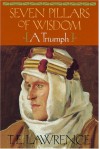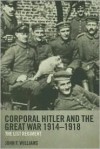Currently reading

"BRISTOL F 2 FIGHTER ACES OF WORLD WAR I" offers the reader a concise history of an aircraft that, despite its initial dismal combat performance on the Western Front in April 1917 (owing to its erroneous use as a traditional 2-seater aircraft), later developed into one of the most successful combat aircraft of the war.
The Bristol F 2 was unique in that, while designed as a 2-seater aircraft for carrying out reconnaissance, photography, and bombing missions, it also had the speed and agility of a single-seat fighter with the benefit of an "extra sting in the tail" in the form of an observer armed with a twin Lewis machine gun on a swivel mount. Aside from service on the Western Front, the "Brisfit" would go on to distinguish itself in Italy and Palestine against the Austro-Hungarian Empire and the Turks & Germans, respectively.
Like other Osprey books, this one is chock-full of photographs and color illustrations showing the Bristol F 2s that were flown by various pilots who "made ace" flying it in combat. Any aviation enthusiast and model airplane kit modeler will love this book.
 2
2
WELCOME WREN JANE BEACON!

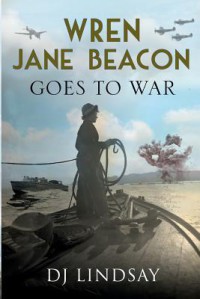
| "WREN JANE BEACON GOES TO WAR" is a novel that engaged me from the start with the story of Jane Beacon's solo journey in a naval cutter in the dead of night from Dover, across the English Channel, to the besieged beaches of Dunkirk on May 30, 1940. If the reader of this review has seen the Christopher Nolan movie, "Dunkirk', you will have already formed in your mind images of British and French soldiers --- sorely fatigued and/or wounded --- seeking to be evacuated to Britain, all the while being harried by air attacks from the Luftwaffe and distant shellfire. Beaches littered with the detritus of a beaten army. An army pressed on all sides --- with only the Channel open to it as a means of escape --- by the full force of the victorious Wehrmacht. I became instantly gripped by D.J. Lindsay's descriptions of the evacuation from Dunkirk - which went on for several days -- and the heroic role played by Wren Jane Beacon in it. Furthermore, I became so caught up in what I was reading that I felt like I was a witness to the evacuation itself. I could almost hear the banshee-like wails of the Stuka dive bombers as they attacked the ships evacuating the troops from the beaches, as well as the rumble from the Heinkel 111 or Dornier bombers horizontally letting loose their store of bombs onto the evacuating ships, and strafing attacks from twin-engined Messerschmitt 110 fighters, as well as from the redoubtable single-seat Messerschmitt 109 fighter that made a strafing attack on Beacon's boat. From Dunkirk, the novel goes on to show the struggle Beacon endured afterward upon her return to Britain. Then we are given greater access -- with the help of a journalist employed to interview '1095 Wren Beacon' -- to Jane Beacon's life and her experiences as a WREN (Women's Royal Naval Service) from the time she joined the service in October 1939, scarcely a month after the outbreak of the Second World War. Jane Beacon is a highly intelligent, gutsy, and resourceful woman in her late teens with a lifelong love of the sea. She was also an experienced sailor, having had the opportunity to further enhance her boating skills (through the influence of her Uncle George, an ex-Royal Navy officer) as the only woman among a crew of young men who sailed down to the Mediterranean on a 6-month cruise. (They cut the cruise short and returned to Britain in August 1939, shortly before the outbreak of war.) But sometimes, as the novel will show, Jane Beacon gets into situations that get her in trouble with higher authority in the Royal Navy, as well as with the Wren top leadership, who, in the early stages of the war, struggled to justify their existence and be a credible asset in a navy, many of whose sailors were skeptical or downright opposed to women being in its ranks. I loved this novel and learning something about the Wrens, as well as some naval lore. The author made the characters come alive across each page. I look forward to reading the other novels in the series. |
LIVING A LIFETIME IN 3 HOURS

So, I began reading "THREE HOURS IN PARIS" eagerly anticipating reading a novel that would enthrall me from start to finish. Well, it wasn't quite like that. I was 35 pages into the novel feeling underwhelmed by what I had read. In fact, what I was reading struck me as shoddy and amateurish, something a reader would expect to find from a first-time novelist, not a practiced and celebrated writer. There is a scene in which one of the main characters in the novel, Kate Rees, is working near a military installation at Hoy in the Orkney Islands (near Scotland) when the installation comes under attack by the German Luftwaffe (air force). Two sentences that helped to describe the ensuing action immediately stood out before my eyes as someone who is a longtime aviation enthusiast. The first sentence is "A propeller plane droned out of the clouds, followed by a second, then a third one." What is THAT supposed to mean? I didn't find that to be a particularly descriptive sentence that would have made the action more compelling and real to me. What kind of aircraft is a propeller plane?! Frankly, that was an awkward sentence and should have been re-worked.
And as for the second sentence, that rankled me because it makes absolutely no sense at all! Well, as a way of proving my point, I'll also include the preceding sentence: "The Luftwaffe were taking another pass now that the clouds had cleared. Only two this time, their swastikas glinting on the fuselage." SWASTIKAS GLINTING ON THE FUSELAGE?! As someone who has read about and studied Second World War aviation since I was a preteen, I know for a fact that Luftwaffe planes bore the swastika on the tail unit, NOT THE FUSELAGE. (The fuselage is the main body of an airplane, distinct from the wings and the tail unit.) Clearly, the author failed to take account of that fact.
Kate, feeling bereaved and bereft after losing her husband and baby daughter during the first year of the war, accepts the offer made by a mysterious and officious gentleman --- who had been made aware of her prowess as a sharpshooter --- to come to London and join the ranks of Section D in British intelligence (i.e., the Secret Intelligence Service or SIS = MI-6).
The time is mid-June 1940. Paris has been declared an 'open city' and the Germans have marched in and occupied it. The British Expeditionary Force (BEF), along with a few scattered French army units, has managed to escape to Britain from the French port of Dunkirk. France is on the brink of total defeat. Kate is hastily trained to undertake a special mission to Paris, where her skills as a sharpshooter would prove to be valuable. She is parachuted into France on the night of June 22, 1940 (which is also the day that France has signed an armistice with Nazi Germany), landing in a non-descript area a short distance from Paris.
From the point Kate arrives in Paris, the pace in the novel quickens. The drama becomes compelling and that is what saved the novel for me. Yet, "THREE HOURS IN PARIS" is not in the class of a Frederick Forsyth, Alan Furst or a John le Carré espionage/action thriller. If Cara Black decides to write another Second World War novel set in France, I hope she will craft a tighter story and show greater care in conveying some historical details.
SUDDEN DEATH & 1920s MAJOR LEAGUE BASEBALL
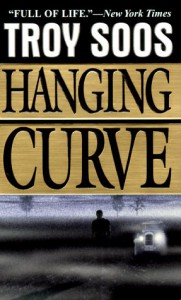
Anyway, Rawlings accepted the offer and, under an assumed name, joined the Elcars in their game against the East St. Louis Cubs in East St. Louis, IL (just across the border from Missouri and very close to St. Louis). On the Cubs was a Negro pitcher by the name of 'Skip' Crawford who pitched brilliantly against the Elcars, striking out Rawlings in a dazzling display of pitching. The game was intense and tempers flared from the Elcars, who were outclassed by the Cubs. Subsequently, Crawford is found dead in the same ballpark several days later, apparently a victim of lynching.
Rawlings is deeply affected by Crawford's murder and takes it upon himself to investigate the murder. In the process, he learns first-hand about the darker side of America as it was in the 1920s when overt racism against Negroes (African Americans) was often condoned or generally accepted without demur by most Americans. Indeed, Rawlings is made painfully aware of the growing power and influence the Ku Klux Klan exerted in several state legislatures beyond the South (e.g. in Indiana, Illinois, and Missouri) and in the local police department.
On the whole, "HANGING CURVE" is a fascinating novel that faithfully conveys the thrilling drama of professional baseball juxtaposed with Rawlings' sleuthing skills and the various personalities in his life whose relationships with Rawlings spice up the novel all the more.
"AND THEY CALLED IT CAMELOT"
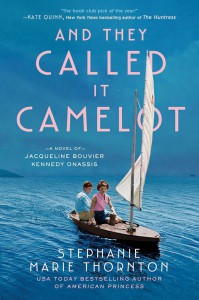
In writing this review for "AND THEY CALLED IT CAMELOT", I readily confess my deep admiration and respect for President Kennedy and Mrs. Jacqueline Kennedy (Onassis) over the past several decades.
The novel starts shortly after Jacqueline Bouvier has broken off her engagement to stockbroker John Husted and is introduced - through a friend at a party - to a young Congressman from Massachusetts who has his sights set on running for the Senate in 1952 against a popular Republican incumbent. The name of the Congressman: John Fitzgerald Kennedy. The novel -- as largely told by Jacqueline Bouvier Kennedy Onassis herself --- takes the reader through the subsequent 2 decades of Jacqueline Kennedy Onassis' life.
One of the best selling points of this novel is that the pace never slackens and is largely faithful to what is historically verifiable about Jackie Kennedy Onassis' life. But I must admit to a literary device the author used in the novel that caused me to raise my eyebrows a bit. I won't say what it is, except to say that it did not interrupt the overall flow of the novel.
Stephanie Marie Thornton has written a first-rate novel. She deserves all the praises she has earned for it.
PICKING UP THE PIECES IN POST-WORLD WAR I EUROPE


For close to 15 years, I have read at least 30 novels by Cynthia Harrod-Eagles, all of which have transported me to a variety of interesting places and times, as well as introducing me to many colorful, endearing, and intriguing people.
"PACK UP YOUR TROUBLES: War at Home, 1919" is the final novel in the War at Home Series, which has been a delight to read. It begins in December 1918, a few weeks after the Armistice. Captain Sir Edward Hunter, the patriarch of the Hunter family, has survived the hazards of war and is anxious for a reconciliation with his wife, Beattie, whose heart had been captured by an old love from her youth who had died from wounds he received from combat about a year earlier, leaving her heartbroken and emotionally distant from her husband. But before the reconciliation could take place, Edward is asked to take on an important role at the upcoming Paris Peace Conference. Thus for most of 1919, Edward is mainly in Paris. Beattie manages to make a visit and both she and Edward begin the tentative process of reconciliation. I won't say much more than that.
The Hunter family and Edward's sister Laura (an adventurous woman who had spent the previous couple of years at the Front as an ambulance driver and the proprietress of a rest home and recreation center for soldiers in Flanders not far from the lines) experience various ups and downs in 1919 --- as do several of the servants who had long been in service to the Hunters at The Elms in Northcote. Now that the war is over, readjusting to peacetime in Britain proves to be easier said than done.
What I loved most about reading "PACK UP YOUR TROUBLES" is that I never wanted to stop reading. Everything about it seemed so tangible, so real. I felt that Sir Edward, Beattie, their children, the family dog Nailer -- and the servants Cook, Ada, and Ethel (along with Munt the cantankerous gardener and Frank Hussey, who had bared his heart to Ethel some years ago and remained determined to woo and marry her) were so vividly alive!!! And now that I've finished the War at Home Series, what I have experienced from it, I know, will stay with me always. Give or take 3 or 5 years, and I wouldn't be averse to re-reading all 6 novels thereof.
SEE WHAT 'A CUP OF TEA' CAN LEAD TO

Though a well-written book, "A CUP OF TEA" reads much like a melodrama one finds in a Harlequin or Mills and Boon romance novel.
The drama begins on a nighttime street in Manhattan in January 1917. A ill-clothed young woman shudders against a street light, hoping for succour. But not the kind of succour a man discreetly offers her as he walks by. Then along comes Rosemary Fall, a wealthy young woman blessed with all the advantages affluence and social connections can give. Rosemary at first kindly offers the young lady a few dollars to help her make ends meet. And then, Rosemary invites the shivering, ill-clad woman to her home (with she shares with her widowed father) for a cup of tea.
What resulted from that cup of tea would set in train a series of events that would radically change the course of Rosemary's life and the lives of 2 of her closest friends. To say more would give away the gist of the story.
"A CUP OF TEA" is very, very readable. The chapters were usually about 5 pages long. But there were some glaring inconsistencies in the story that I couldn't ignore. One involves the work Rosemary carried out as a volunteer nurse in a VA Hospital. There was NO VA Hospital in 1910s America. The VA (Veterans Administration) wasn't established until July 1930! There was also mention of a ship sailing from America to Britain as "an American carrier", which was sunk by a German U-boat. As far as ocean-going vessels are concerned, a 'carrier' is a warship that carries warplanes in its hold for use in offensive operations against an enemy. During the First World War, the U.S. did NOT have aircraft carriers. That wouldn't take place until the 1920s!
Were I to assess "A CUP OF TEA" on the basis on its writing style, I'd rate it 3 stars. But because of the inconsistencies in it that I cited earlier - and the elongation of some of the time sequences that made the story in certain instances depart from reality, I can at best give "A CUP OF TEA" two stars.
BLACK TULIP: A POOR EXCUSE FOR A CREDITABLE BOOK

I came to this book, "BLACK TULIP: The Life and Myth of Erich Hartmann, the World's Top Fighter Ace" with rather high expectations. As a longtime aviation enthusiast, I first became aware of Erich Hartmann (1922-1993), the great Luftwaffe fighter ace, as a teen in 1978 from reading Edward Sims' book 'The Aces Talk.' I later went on to read several other books that either exclusively focused on Hartmann's wartime achievements on the Eastern Front and life postwar or referred to his combat career in passing.
This book "BLACK TULIP" was a setup by both its author and publisher to convince the reader that some startling new revelatory information about Hartmann himself and his wartime service in the Luftwaffe had been uncovered that would cast serious doubt on the veracity of earlier works about Hartmann and show him to be a disreputable character shaped by his experiences from growing up in Nazi Germany. Frankly, what the author had to say about Hartmann was not revelatory nor original. What's more: some of what he added in the book as a way to lend clarity to his argument about Hartmann were either historically inaccurate or little more than an empty filler to make the book more weighty and scholarly than it really is. For instance, the author referred several times to the German military of World War I as the Wehrmacht. There was no Wehrmacht between 1914 and 1918! The German military between 1871 (when Germany became a unified country) and 1918 was known officially as 'das Deutsche Heer' or the German Army. The Wehrmacht did not come into being until 1935, which was also when Hitler introduced mandatory conscription and the Luftwaffe was formally established as a distinct branch of the German armed forces.
This is the author's first book and I think - as some budding writers will do - he tried too hard to impress readers with weak arguments meant to show Hartmann as disingenuous and dishonest with his war record and his attitude about having fought for Germany. Well, if you're going to indict Erich Hartmann, the top fighter ace of all time, then you might as well indict every German man and woman who served in the Wehrmacht during the Second World War. Certainly, some of them committed crimes against humanity. But one cannot indict the Wehrmacht en masse for war crimes carried out by some in its ranks.
 2
2
ANATOMY OF AN AMERICAN FAMILY ADRIFT THROUGH 3 DECADES
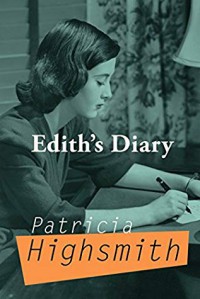
"Edith's Diary" is a psychological thriller that has as its focus what, at face value, is a typical, middle class family in mid-1950s America. It begins with Edith Howland, her husband Brett, their 10 year old son Clifford (aka "Cliffie"), and the family pet poised to move from their Manhattan apartment to their new house in Pennsylvania, a stone's throw from Philadelphia. Edith has high hopes that the move to a home of their own, will usher in a new life rich in opportunity for herself and family. She takes with her a diary into which she has channeled her inmost thoughts and worldly observations.
Once the Howlands are settled into their new home and the staid 1950s recede into the 1960s, Edith strives to eke out a living with her husband on a paper to which both contribute articles and essays. One of Brett's relatives, George, a man of advancing years, comes to live with the Howlands. Over time, George's needs, coupled with the struggles Brett and Edith have in raising their son, give rise to a rift in Brett and Edith's marriage. Rather than growing together, Brett and Edith gradually grow apart, and Brett abandons the family for a new life - and love - in New York.
The rest of the novel shows, ever so subtly and cleverly, how over a decade, Edith retreats almost imperceptibly from reality, and manages to create in her diary, a reality conforming to what she desires out of life. I'm normally not a great reader of psychological thrillers. But I have known --- since the late 1990s --- of Patricia Highsmith's touted reputation as a writer of psychological suspense. And that is what prompted me, at long last, to take up one of her novels. I very much enjoyed the journey it put me on, and the surprising resolution to that decades long journey.
I recommend "Edith's Diary" to anyone who loves to read a well-crafted, slow boiling pressure cooker of a psychological thriller.
WAR OVER THE PACIFIC, 1941-1945

Whilst browsing in a local Barnes & Noble bookstore a couple of weeks ago (i.e. February 21, 2020), I came across this book by chance. As a longtime aviation enthusiast, I resolved to buy this book forthwith.
"PACIFIC AIR: How Fearless Flyboys, Peerless Aircraft, and Fast Flattops Conquered the Skies in the War With Japan" is a fascinating story on many levels of how the U.S. Navy's aviation arm (inclusive of aircraft carriers) developed between the wars and became one of the key elements in America's arsenal that helped ensure victory against Imperial Japan in the Second World War. The book also shares with the reader the history of Grumman Aircraft, its burgeoning relationship with the U.S. Navy during the 1930s, and the aircraft it designed and perfected (e.g. the F4F Wildcat, the F6F Hellcat, and the TBF Avenger dive/torpedo bomber) whose pilots served as the spearhead from the earliest raids by U.S. carrier task forces against Japanese military installations in the Marshalls and Gilbert Islands in February 1942, to the Battles of Coral Sea and Midway, later to the struggles for Allied supremacy in the Solomon Islands during 1942 and 1943, and onward to the final decisive sea and air battles in the Central Pacific in 1944 and 1945.
What also makes this book doubly interesting are the insertion of eyewitness accounts from the various U.S. Navy personnel (flyers, gunners, and junior and senior staff officers), which give an immediacy to "PACIFIC AIR" that otherwise it would be without. Furthermore, I appreciated the author's mention in various parts of the book about the life and combat career of Saburo Sakai, a prewar trained Imperial Japanese Navy fighter pilot who was one of the few of Japan's top aces to survive the war. His record of combat from China, to the Philippines, the Dutch East Indies, New Guinea, over Guadalcanal (August 1942), and over the Pacific and Japan (after surviving a grievous head wound sustained in combat with U.S. Navy fighters and dive bombers) during 1944 and 1945, is truly impressive.
I highly recommend "PACIFIC AIR" for anyone who is fascinated with aviation and compelling human interest stories. It also has some interesting photos of planes and the various U.S. Navy pilots and personnel who played crucial roles in the Second World War.
"WHAT IS LOVE?" - Haddaway

"AMOUR: How the French Talk about Love" is one of the most candid, refreshing, and deeply affecting books I've read in a very long time. The book is the author's labor of love and is made up of the various interviews she had across France and in Martinique and Guadeloupe (which are legally parts of France itself) with single individuals, heterosexual couples, and single sex couples (men and women alike) of varied ages. There are also in the book photographs of many of the interviewees and of the places where they reside, which I much enjoyed seeing, for they gave me a better feel into the lives of these people.
I first heard of this book from an interview Stefania Rousselle had with BBC Radio London a short time ago. Anyone who reads this book -- even if he/she has yet to experience the stirrings of love in their lives -- will find something with which to relate. For example, the following remarks by a 24 year old organic farm volunteer struck a deep chord and made me feel sad for him, especially given his youth:
"I think girls want a dominant, strong type of guy, not the sensitive man who is too emotional, like me. I am always overthinking things. I want to love one person.
"I think I have waited too long now. I have a friend who I fell in love with two years ago. I said, 'I like you a lot,' and she told me she liked me too, but she had another boy, and she's not a polygamist. ... I had big expectations and put too much pressure on myself...."
"Most of the time, I am happy. But I am sad in the evenings. It's sad to be alone. It would be nice to sleep and wake up next to somebody and be like: 'Good morning, it's gray outside.' "
These are real-life stories -- many of which probably parallel our own individual experiences of being in love and in romantic relationships with that special person or persons over time --- that show love in its various manifestations and its varied impacts on the heart, soul, and everyday life. Some of them made me joyful and others made me deeply sad to the point of tears.
"AMOUR" is one book that I would gladly read again and again and again. After all, love is the most basic need anyone has as a way of finding and maintaining lasting and meaningful fulfillment in life.
MAIGRET TAKES TO THE WATERS

Inspector Maigret and his wife are on holiday in Vichy, a resort town in south central France renowned for its spas and medicinal waters. Maigret had been feeling out of sorts and had consulted his physician before leaving Paris, who recommended Maigret to a colleague of his, Dr. Rian, whose practice was in Vichy. Maigret later met with Rian, who recommended a regimen consisting of daily walks (which he and Madame Maigret did together daily), a healthy diet, and drinking of Vichy's pure water. So, no beer, sausage, and a cut down on smoking from his beloved pipe for Maigret.
Maigret's holiday is anything but humdrum, when he becomes indirectly involved in a case by the local police authorities (whose chief, Lecoeur, had once served under him in Paris) in which a woman was found strangled to death in a residence she owned. It so happened that Maigret had seen this woman (sometimes referred to in the book as "the lady in lilac":, reflective of the outfit she was wearing when Maigret espied her in public) once days earlier whilst walking with his wife. "For Maigret, the lady in lilac was not simply the victim of a murder, nor a person who had led a particular type of existence. He was beginning to know her and he was trying, almost unwittingly, to learn more about her."
All in all, this was a breezy and thought-provoking story. I enjoyed the experience.
MANHATTAN HAS ITS GHOSTS
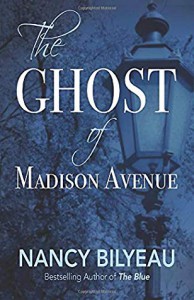
When I began reading this novella, I wasn't sure if I would enjoy the experience. It begins with Helen O'Neill, a widow of Irish American stock, who had been recommended for a prestigious position working in the library of the great and powerful financier J.P Morgan by its librarian Belle da Costa Greene, being locked in a room of the library after being found in Morgan's private study. The time is December 1912, shortly before Christmas.
But as I went on to read further into the book, the author did subtly reveal, by degrees, to the reader the nature of Helen's life with her family in their home in the Bronx (where she had gone to live after her husband had died from fever in 1898 as a soldier in the Spanish American War). Helen is a very sensitive soul with a kind of sixth sense, which the Irish call 'aes sidhe.'. One wintry night after leaving the library to return home to the Bronx, she makes the acquaintance one night of a young woman dressed in clothes long out of fashion and unsuitable for the time of year. Helen is troubled by the experience and at first is at a loss as to how to make sense of it. She would encounter this woman a few more times, including once in the library itself! This is 'the ghost of Madison Avenue', a ghost with an interesting connection with one of the main characters which I won't reveal here. Indeed, there is so much more to this book that evokes mystery and wonder not unlike that one would find in Wilkie Collins' novel, 'The Woman in White.'
I was surprised - and amazed - by what I found from reading "THE GHOST OF MADISON AVENUE." It left me with a palpable feel for the New York City of 1912, as well as for the lives of some of the Irish Americans who resided and worked there. Thank you, Nancy Bilyeau.
BASEBALL, BULLETS & BRASS KNUCKLES IN 1921 CINCINNATI

This is the fifth novel in the Mickey Rawlings Mystery Series that I've read and it doesn't disappoint. It is 1921 and Rawlings is now playing with the Cincinnati Reds. He volunteers to help a local baseball super fan, Oliver Penniman, set up an exhibit of memorabilia to honor the 1869 Cincinnati Red Stockings, the first professional baseball team in American history.
But before the exhibit could take place, Penniman is murdered and Rawlings "soon finds himself embroiled in a mix of conspiracy, lies, and murder that [could] end his career ... and his life."
THE "RACE OF ACES" - THE TRIUMPHS & TRAGEDIES

A few weeks ago, while seated in my cubicle at work having lunch, I came across "RACE OF ACES" quite by accident -- courtesy of The New York Times. Being an aviation buff, I could hardly contain my excitement from reading the NYT review of the book.
"RACE OF ACES" is a story that begins during the dark days of the Pacific War in the summer of 1942. From the attack on the U.S. Pacific Fleet at Pearl Harbor (December 7th, 1941) to the middle of 1942, Japan's military machine had run riot in the Far East and Pacific, handily defeating the various American, British Empire, Australian, and Dutch efforts to thwart its advances into Burma, Malaya and Singapore, the Philippines, the Dutch East Indies, and South Pacific.
There was one United States Army Air Force (USAAF) outfit that also played a role in trying to stem the Japanese tide of victory from April to July 1942 by which time it was placed in the hands of a new commander (General George Kenney) who was determined to restore its morale. This was the Fifth Air Force, whose fighter units in New Guinea with their P-39 Airacobra fighters were hard pressed to contest Japanese airpower because Japan's Zero fighters outclassed the P-39s in combat.
Upon arriving in New Guinea, Kenney was determined to reverse the fortunes of the Fifth Air Force and instill confidence in his fighter pilots to take on Japanese Army and Navy air units and win. As a way of achieving this goal, Kenney promoted what would come to be called the "Race of Aces", a challenge to every fighter pilot in the Fifth Air Force to surpass the victory score of America's Ace of Aces of World War I, Eddie Rickenbacker, who had achieved 26 victories in aerial combat against the Germans on the Western Front. Indeed, Rickenbacker himself, who visited Kenney and the Fifth Air Force near the end of 1942, offered a case of bourbon to any fighter pilot who surpassed his score. Kenney also offered an additional case of bourbon. The race was on.
It was also at the time of Rickenbacker's visit that a new, revolutionary USAAF fighter plane began to arrive in New Guinea in appreciable numbers to challenge Japanese air power in the Southwest Pacific. This was the twin-engined P-38 Lightning, which would go on to prove itself more than a match for the Zero and other Japanese fighters that were pitted against the Lightning in combat.
"RACE OF ACES" highlights 5 USAAF fighter pilots -- Richard Bong, Tommy MacGuire, Neel Kearby, Charles MacDonald, and Gerald Johnson -- who, through their prowess in aerial combat and their mounting victory scores, would grab the nation's attention as they contended to be the first to exceed Rickenbacker's score. What also makes this book so utterly compelling is the way Bruning recaptures the esprit de corps, the strong sense of unity of purpose and teamwork among the USAAF fighter units under Kenney's command (between pilots and ground crews), and the tensions, excitement, and perils of fighter-to-fighter combat.
Of the 5 pilots previously mentioned, it was Colonel Neel Kearby, a proud and boastful Texan who commanded the 348th Fighter Group --- which arrived in New Guinea during the summer of 1943 -- who was an exponent of the ruggedly built P-47 Thunderbolt, which was not looked on with favor by many of the fighter pilots in the Southwest Pacific. Kearby, through his own example and the fierce loyalty he inspired from those who served under him in the 348th Fighter Group, set out to show what the Thunderbolt was capable of doing. In one scrap with the enemy, Kearby shot down 6 Japanese fighters, for which action he would be awarded the nation's highest decoration for bravery in combat, the Medal of Honor.
"RACE OF ACES" also shows to the reader the high costs of war and how they impacted on the 5 aforesaid aces, their fellow fighter pilots in the Fifth Air Force, as well as the ground crews in V Fighter Command between 1942 and 1945. These are the costs that would be passed on to wives, sweethearts, mothers and fathers, brothers and sisters -- and even unto future generations.
I cannot help but feel after reading this fantastic book a deep and abiding sense of gratitude for the sacrifices made by those Americans (like my Dad - who served as a GI in Europe from 1944 to 1946) who served in the military during the Second World War. We, who live today, owe them so much in the unending struggle to make the United States a better, more just and compassionate country for all who reside within it.
WHO WAS ONCE THE SECOND MOST POWERFUL MAN IN THE WORLD?
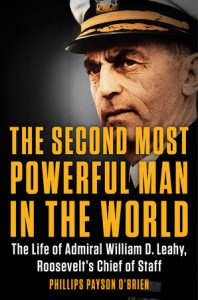
When I decided several months ago to borrow this book ("THE SECOND MOST POWERFUL MAN IN THE WORLD") from my neighborhood library, its subject William D. Leahy was someone I regarded as a peripheral figure in history. I had had some prior awareness of Leahy. But I had assumed that he, a naval officer, had been Franklin Roosevelt's physician during the Second World War. And so, I didn't give him a second thought.
But once I began reading this biography, I began to see that Leahy was a remarkable man on so many levels who selflessly devoted his life in service to the United States. Born in 1875 in Wisconsin, a second-generation Irish American, Leahy went on to attend the Naval Academy at a time when the U.S. Navy was in the midst of transitioning from the Age of Sail to a modern navy run on coal --- which in turn would give way in the 20th century to warships powered by gasoline derived from petroleum --- graduating in 1897. Leahy would later see action during the Spanish-American War and over the next 52 years would rise through the Navy, having commanded various warships in home waters and overseas and engaged in a variety of administrative and diplomatic roles. Indeed, as a young naval officer, Leahy in 1913 made the acquaintance of Franklin Roosevelt, who was then Assistant Secretary of the Navy in the Wilson Administration. The two men were to form a deep, special bond over the years. And though their paths would diverge during the 1920s, the men kept in touch. So that when Roosevelt was elected President in 1932, Leahy would become a confidante and adviser to FDR, who furthered Leahy's naval career. Before the decade was out, Leahy would serve as the Chief of Naval Operations, the highest rung in the Navy's hierarchy.
I was also impressed that Leahy, unlike many of his contemporaries in the post-World War I era who were wedded to the battleship as key to naval doctrine and tactics, grew to appreciate the potential that aircraft represented as they became increasingly sophisticated, capable of travelling great distances and showing their worth as offensive weapons at sea. Leahy would also serve in 2 key political posts - first as Governor of Puerto Rico (1939-40), in which capacity he oversaw the development of several military bases, assumed the stance of not interfering in local politics, and made an effort to understand and respect Puerto Rican culture; and later as the U.S. Ambassador to Vichy France (from 1941 to May 1942).
But Leahy's greatest role -- which was to be the capstone to his naval career -- was as the nation's first Chairman of the Joint Chiefs of Staff during the Second World War. There was hardly any aspect of wartime grand strategy in which Leahy did not leave his stamp. This is where the book title of "THE SECOND MOST POWERFUL MAN IN THE WORLD" is most apt. In this role, Leahy's relationship with FDR deepened further, becoming, it seemed to me, almost symbiotic. Leahy deeply admired and respected FDR and never sought power for himself. He worked incredibly hard and put in long hours as a matter of routine.
And then upon FDR's death in April 1945, Leahy would stay on to serve in the Truman Administration, developing a close relationship with President Truman. He helped to shape what would become the Truman Doctrine (along with the National Security Council and the CIA - which he felt should not engage in clandestine activities but restrict itself to gathering intelligence for the government; unfortunately, after Leahy retired, the CIA - due to the influence of Allen Dulles who led it during the Eisenhower years - would later have as its remit, clandestine activities and other nefarious doings) in the early Cold War years, retiring in January 1949.
What I also appreciated from reading this biography was learning about Leahy the man, how he thought and felt about the various famous and not-so-famous personages he dealt with -- as well as his attitudes on people and the various travels he embarked upon throughout his long life. (Leahy kept a rather extensive diary through most of his life.)
And now that I've read this delightful book, I would urge anyone who wants to learn about a signficant historical figure deserving of wider recognition, pick up "THE SECOND MOST POWERFUL MAN IN THE WORLD." It's one of the best biographies I've ever read.

